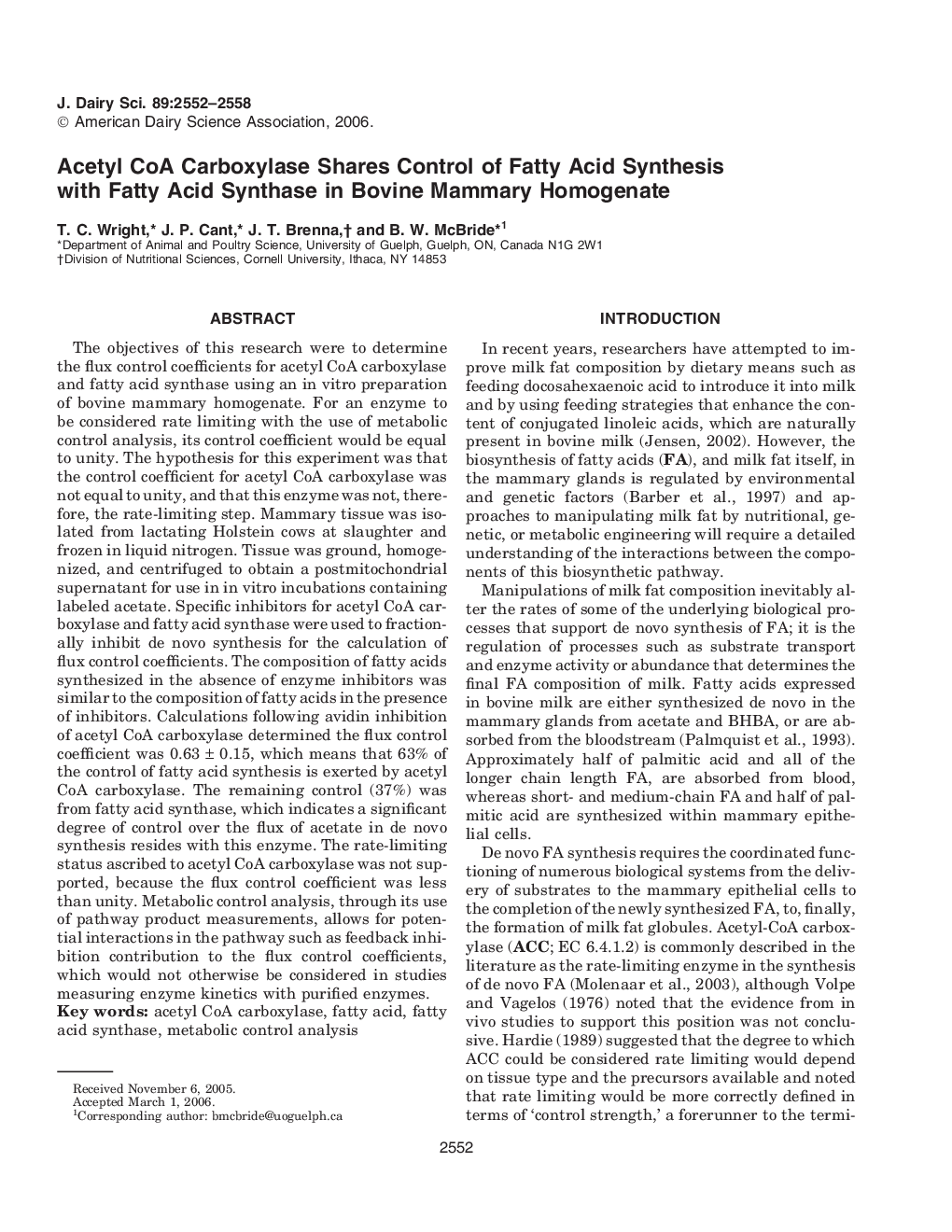| کد مقاله | کد نشریه | سال انتشار | مقاله انگلیسی | نسخه تمام متن |
|---|---|---|---|---|
| 2441366 | 1108138 | 2006 | 7 صفحه PDF | دانلود رایگان |

The objectives of this research were to determine the flux control coefficients for acetyl CoA carboxylase and fatty acid synthase using an in vitro preparation of bovine mammary homogenate. For an enzyme to be considered rate limiting with the use of metabolic control analysis, its control coefficient would be equal to unity. The hypothesis for this experiment was that the control coefficient for acetyl CoA carboxylase was not equal to unity, and that this enzyme was not, therefore, the rate-limiting step. Mammary tissue was isolated from lactating Holstein cows at slaughter and frozen in liquid nitrogen. Tissue was ground, homogenized, and centrifuged to obtain a postmitochondrial supernatant for use in in vitro incubations containing labeled acetate. Specific inhibitors for acetyl CoA carboxylase and fatty acid synthase were used to fractionally inhibit de novo synthesis for the calculation of flux control coefficients. The composition of fatty acids synthesized in the absence of enzyme inhibitors was similar to the composition of fatty acids in the presence of inhibitors. Calculations following avidin inhibition of acetyl CoA carboxylase determined the flux control coefficient was 0.63 ± 0.15, which means that 63% of the control of fatty acid synthesis is exerted by acetyl CoA carboxylase. The remaining control (37%) was from fatty acid synthase, which indicates a significant degree of control over the flux of acetate in de novo synthesis resides with this enzyme. The rate-limiting status ascribed to acetyl CoA carboxylase was not supported, because the flux control coefficient was less than unity. Metabolic control analysis, through its use of pathway product measurements, allows for potential interactions in the pathway such as feedback inhibition contribution to the flux control coefficients, which would not otherwise be considered in studies measuring enzyme kinetics with purified enzymes.
Journal: Journal of Dairy Science - Volume 89, Issue 7, July 2006, Pages 2552–2558